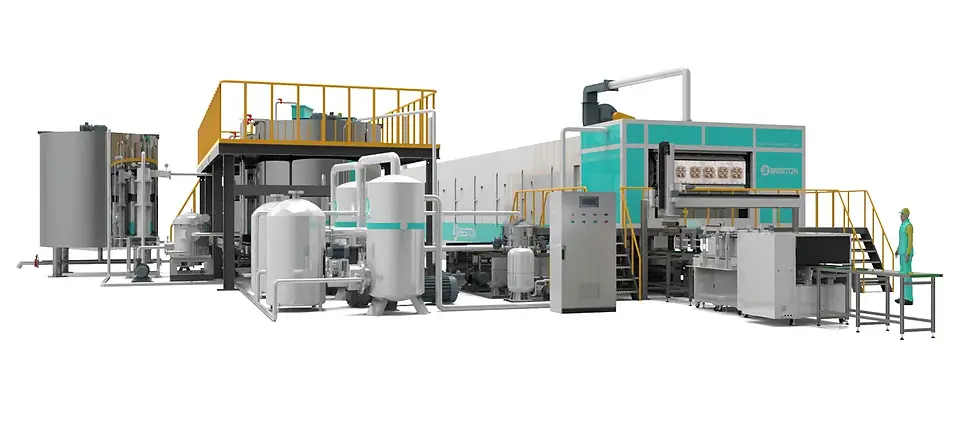Raw Material Integrity and Its Influence on Egg Carton Production
- june11433
- May 26
- 2 min read
The performance of an egg carton maker is intrinsically linked to the quality of raw materials fed into the system. In pulp molding applications, raw material variability can directly affect product consistency, surface finish, mechanical strength, and production efficiency. Pulp molding machine manufacturers consistently stress the necessity of maintaining uniform input quality to achieve optimal machine output.
Composition and Fiber Structure
The primary input for an egg carton maker is waste paper—typically a mix of old newspapers, corrugated cardboard, and office waste. However, not all paper waste is created equal. Variations in fiber length, lignin content, and contaminant levels impact pulp consistency. Long-fibered materials, such as unbleached kraft paper, yield stronger egg cartons with superior impact resistance. In contrast, short or degraded fibers, often found in heavily recycled sources, result in weaker structures prone to deformation.
Contamination from adhesives, synthetic coatings, and ink residues can impair pulp homogeneity. These substances obstruct the drainage process during vacuum forming, leading to irregular mold filling and increased rejection rates. Furthermore, high concentrations of inorganic fillers like calcium carbonate or kaolin compromise the bond strength between fibers, diminishing final carton durability.

Relevance for Equipment Compatibility
Pulp molding machine manufacturers design forming systems calibrated for specific pulp characteristics. Feeding the machine with unsuitable raw material leads to suboptimal vacuum suction, clogging of filter screens, and premature wear of mold surfaces. Over time, this degrades the performance of the egg carton maker and increases maintenance intervals.
Selecting consistent, uncontaminated, and fiber-rich raw material not only protects the mechanical integrity of the equipment but also supports continuous high-yield production. It allows the forming, pressing, and drying subsystems to operate within their engineered tolerance bands.
Pulping Efficiency and Slurry Stability
High-quality raw material contributes to more efficient pulping. Homogeneous fiber blends disintegrate faster and more uniformly, reducing the need for extended agitation or chemical treatment. This minimizes energy consumption and shortens preparation cycles. Stable pulp slurry also reduces sedimentation in the holding tank, ensuring continuous and uniform supply to the forming mold.
A well-balanced pulp consistency, usually maintained between 0.8% and 1.2% solids content, ensures that each mold cavity receives an adequate fiber mass. When raw material quality fluctuates, the pulp density varies, leading to uneven thickness in the molded cartons. This directly impacts stacking strength, moisture resistance, and appearance.
Impact on Drying and Finishing
Egg cartons with uneven fiber distribution require longer drying times due to inconsistent moisture retention. Inferior pulp often produces trays with microcracks or fiber nodules, necessitating rework or increasing wastage. Thermal drying systems must compensate with elevated energy output, raising operational costs.
Moreover, low-grade pulp results in poor surface texture, which complicates post-processing operations such as logo embossing, printing, or die-cutting. The machine’s overall efficiency drops, as more units fall outside acceptable quality thresholds.
Conclusion
Raw material quality remains a decisive factor in the performance and output consistency of an egg carton maker. For operators seeking to maximize uptime, reduce defects, and extend equipment longevity, careful selection and conditioning of input fibers are essential. Leading pulp molding machine manufacturers continuously emphasize raw material control as a foundational pillar of efficient molded pulp production.




Comments